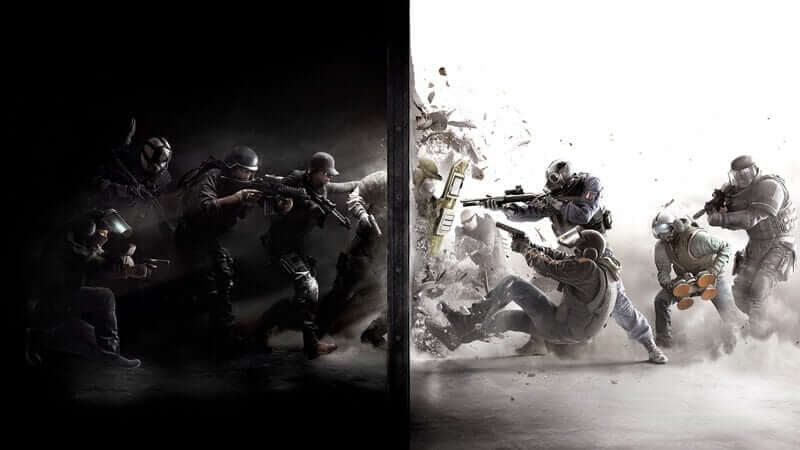
Rainbow Six Siege returns from the fold
Rainbow Six Siege had what people might call a ‘troubled launch’. Ubisoft’s star title and tactical shooter was praised by critics but had a few flaws – while they were patched out and the game received good support and service from Ubisoft Montreal, the game’s sales were described as lacklustre and underwhelming.
Often, for a game that’s it. Launch disasters rarely recover properly, but that’s exactly what happened here. While normally the opposite is true, RSS logged steadily rising subscription and player numbers. Though released in 2015, it wasn’t until 2018 that the game hit the 35 million registered player mark – an unusual development for sure.

© Ubisoft
Originally, some six months after the game was released, Ubisoft launched the first major esports event for the game – the PC finals at the ESL Studio in Germany. To say the event was a flop would be an understatement.
Four teams, $50.000 dollars prize money and a crowd made up almost completely of press and those working at the event – given that this was the first chance Ubisoft had to show that RSS was a potential esport, they really blew it. Mid-tournament, a player discovered a bug that made his chosen operator almost useless – a big no-no.
“The first round, the first action we see on screen is actually indeed the infamous Sledge bug,” said Alexandre Remy, brand director of Rainbow Six Siege, who was at the event. “At that moment, it felt like a tragedy because that was, again, that first action, first game, our first final ever, and a bug happened, so we had to find a workaround for that. So yeah, it wasn’t too much of a good start.”
The tournament was paused, the devs contacted and some guests fell asleep in the arena until a conclusion was found – the teams were allowed to use that operator but not the affected ability. That’s the kind of non-solution that would really upset fans if it was to happen at a Riot event for example.
For a new esport, this could all but mean the end, however Ubisoft had already committed to at least one year of Siege competition in partnership with ESL, so it wasn’t as simple as quietly giving up. After several more semi-successful events, a Montreal event that had the Latin American and Asian Pacific teams compete together that fans really started to get interested again.
“We were just thinking, how do we celebrate the one-year anniversary of the game and the fact that we’re committing for a second one?” said Remy. “How do we make an event that can resonate in our community, whether you are an esports fan or not? And yes, we were taken by surprise by the level of viewership, for instance, and commitment of the people, but let’s be honest, we were nowhere near whatsoever any of the big esports.”

© Ubisoft
RSS took some drastic steps to improve itself. The Xbox side of things was scrapped in order to focus on the PC side, the Latin American region became a permanent part of the Pro League (along with NA and EU), and soon, numbers started to improve.
Towards the end of the next season, prize pools improved and the locations of the tournaments got more varied too – Ubisoft was clearly committed to making it work, and it showed. In the second year, a number of big esports names signed their own RSS teams, including Evil Geniuses, FaZe Clan, Team Liquid and more – this also helped draw in new fans. This trend continued throughout the second year and wouldn’t you know it, now 10 of the 12 biggest esports organisations in the world have their own Siege roster.
February this year was when the game really moved into solid esports grounds though. “I think the second Invitational last February is the moment a lot of the people in the industry started to say, ‘Wow look at those numbers,’ ” said Remy. “I only realised [the extent of it] the week before the event itself, when I went back and watched some of the VODs of the first Six Invitational. When I entered the venue I realised we had jumped generations. Honestly, the difference was striking.”
The second Invitational had over 320000 concurrent viewers in the live final and people who’d already written RSS off years ago took notice – the game probably won’t ever make it to the top esports of the world like Dota, Lol or Overwatch, but given it’s more than rocky start, the recovery and improvements Ubisoft made with this game are remarkable.
Well played, Ubisoft – well played!












